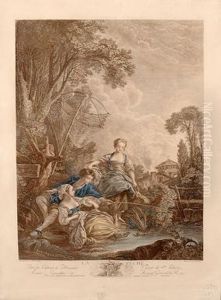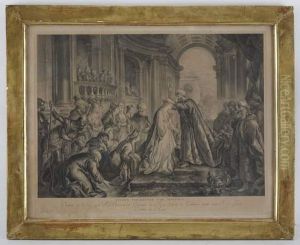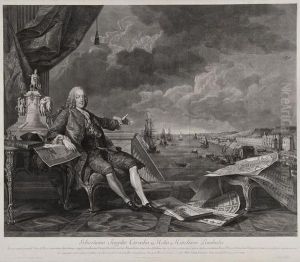Jacques Firmin Beauvarlet Paintings
Jacques Firmin Beauvarlet was a French engraver born in 1731 in Abbeville, a town in the Picardy region of France. He was a prominent artist of the 18th century, known for his skillful engravings which captured the essence of French Rococo art. Beauvarlet was a pupil of the distinguished engraver Jacques-Philippe Le Bas and quickly developed his own style, demonstrating his technical proficiency and artistic sensibility.
Beauvarlet moved to Paris to further his career and became a member of the Académie Royale de Peinture et de Sculpture in 1762. His membership in this prestigious institution was a testament to his growing reputation and skill as an engraver. Throughout his career, Beauvarlet produced a wide range of works, including reproductions of paintings by famous artists of the time, such as François Boucher, Jean-Honoré Fragonard, and Nicolas Lancret, as well as original compositions.
Beauvarlet's engravings were celebrated for their delicate lines, attention to detail, and ability to convey the lightness and elegance characteristic of Rococo art. His works often featured pastoral scenes, mythological subjects, and portraits. By translating these subjects onto copper plates, Beauvarlet played a significant role in disseminating the Rococo style across Europe and making the works of French painters accessible to a wider audience.
The French Revolution brought about significant changes in the art world, and Beauvarlet, like many of his contemporaries, experienced the impact of these political and social upheavals. Despite the turbulent times, he continued to work and adapt, contributing to the art of engraving until his death in 1797. Jacques Firmin Beauvarlet remains a respected figure in the history of French engraving, recognized for his contributions to the Rococo movement and his mastery of the engraver's craft.


